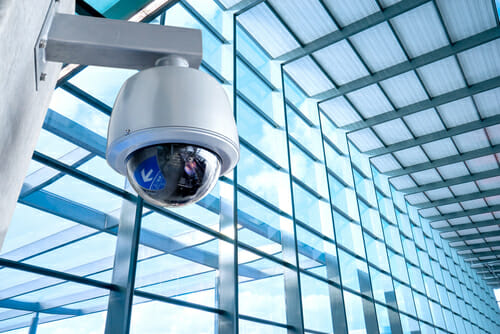The goal of evidence is to prove a specific assertion – and if you believe the maxim “seeing is believing,” the best evidence is going to be video. If it’s a question of what someone said, audio evidence is the most optimal option. With so much audio and video evidence coming into courts these days, litigators are rightly concerned with admissibility. Spending time and money to prepare the evidence for presentation, only to have it excluded, is frustrating and potentially outcome altering. In this article, we’ll look at some interesting recent cases where courts have either allowed or excluded audio and video evidence at trial.
In a premises liability suit in Louisiana, the court allowed video evidence to be used by the plaintiff to establish that the defendant’s employees created a hazard. In DUPONT v COSTCO WHOLESALE CORP., ET AL. (Civil Action No. 17-4469, United States District Court, E.D. Louisiana, 2020), the court denied the defendant’s Motion for Judgment as a Matter of Law and New Trial. After reviewing video surveillance footage of the premises, the court found that the water on the floor that the plaintiff slipped on created a hazard. One key part of the video shows COSTCO’s employees wiping down shopping cart handles and seats, but not wiping down the sides of the cart in accordance with COSTCO’s policies, which caused water to drip on the floor. This is one of those cases where a retailer’s video surveillance system provided inculpatory evidence, which was admissible in court.
In FREESE v. HONDA MANUFACTURING OF INDIANA, LLC. (No. 1:18-cv-4016-JMS-MPB, United States District Court, S.D. Indiana, Indianapolis Division, 2020), the plaintiff’s YouTube video evidence purportedly of the defendant’s assembly line was excluded from trial because the plaintiff erred when she did not properly disclose the video during discovery. Beyond the lack of disclosure, Defendant HONDA also argued that the video should not be allowed because the video was not properly authenticated regarding who produced the video and the redactions/edits that were made. While Plaintiff FREESE argued that she could authenticate the content of the video as being an accurate depiction of the defendant’s assembly line, the court considered the question of authentication moot since the video was excluded on the disclosure issue. This reinforces the importance of following court rules for all types of evidence, including audio and video.
Finally, a recent civil case heard in the Pennsylvania Supreme Court addresses many of the finer points of audio and video evidence and redactions. EASTON AREA SCHOOL DISTRICT, Appellant v. Rudy MILLER and the Express Times, Appellees, No. 13 MAP 2019, Supreme Court of Pennsylvania, 232 A.3d 716 (2020), involved a Pennsylvania Right to Know Law (RTKL) request for a video captured aboard a school bus. The video allegedly showed a district employee in a physical incident with a student while other students were present. In terms of hot button issues for audio and video evidence, this case touches upon many: the privacy of minors, the privacy of third-party non-participants on video, a public agency, and the freedom of access to information. As with many cases where the audio and video evidence is at issue, the first question the court addressed was whether the video should be released at all. The District argued that the video should be exempted from RTKL provisions as it would jeopardize the District’s receipt of federal funds under the Family Educational Rights and Privacy Act (FERPA), administered by the Department of Education, which guarantees certain privacy and control rights to students and their parents with regard to educational records and personally identifying information. The PA Supreme Court concurred with a lower court ruling that this argument was not valid and declared the video was a public record that could be released. The court didn’t leave the decision at that, however, taking up the issue of the right to privacy of third-party non-participants. The court specifically noted its rationale for taking up the issue:
In addition to obvious safety concerns, such a disclosure also necessarily implicates the students’ right to informational privacy — that is, “the right of the individual to control access to, or the dissemination of, personal information about himself or herself” — which this Court has explicitly held must be considered and balanced against the public interest when individuals who are not themselves a party to the request for access appear in the content of records subject to public disclosure under the RTKL (https://scholar.google.com/scholar_case?case=7459711688611743184&q=video+redaction&hl=en&as_sdt=40000006&as_ylo=2020).
The PA Supreme Court weighed in on the specific redactions that must be made to the video by the District before release to protect the students’ privacy by ordering “the District is obligated to redact students’ images by, for example, blurring or darkening portions of the video revealing the students’ identities” (ibid). While it may seem logical simply to make those redactions before releasing the video, there was one justice who dissented on that point. EASTON AREA SCHOOL DISTRICT v MILLER makes a salient point that anyone looking for guidance on audio and video redactions may wish to keep in mind, “Before the government may release personal information, it must conduct a balancing test to determine whether the right of informational privacy outweighs the public’s interest in dissemination” (ibid).
Using audio and video evidence in court can be an excellent way to prove a case. In fact, it’s often necessary to have the benefit of hearing and seeing corroborative evidence in order to make it believable to a jury. Keep in mind, however, that all evidentiary rules must be followed –from the discovery phase through presentation at trial. Collecting, processing, and presenting audio and video evidence properly could mean the difference between winning or losing your case.
